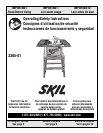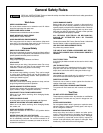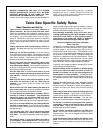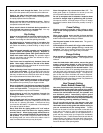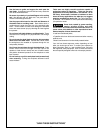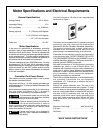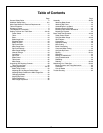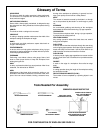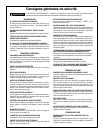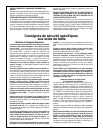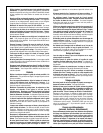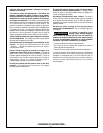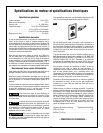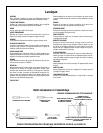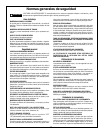
5.
“SAVE THESE INSTRUCTIONS”
Use the fence to guide and support the work past the
s
aw blade.
U
nsupported cuts will shift and may cause the
work to be thrown backward.
Be aware of proximity of you hand/fingers to the cutting
tool.
Non-through cuts are “blind cuts”, use push sticks to
move the work through the cutter.
Use the proper table insert for the width and diameter of
t
he dado blade or molding head.
D
ado blade stack or
molding head is wider than the slot of the standard table
insert. These blades will strike and damage the standard
i
nsert and cause severe injury by throwing the insert against
the operator.
Do not bevel with dado blades or molding heads. These
accessories are designed for perpendicular non-through
cutting.
Do not elevate the dado blade so that the hub protrudes
above slot of the table insert.
Contact with hub will cause
the workpiece to be unstable as it passes through the cut
and possibly kickback.
Don’t force the workpiece through the dado blade. Dado
blades create wide non-through cuts that require the
operator to feed the work slowly and use of feather boards
and positive downward pressure on the workpiece to avoid
loss of control.
Do not back up or pull the workpiece back (reverse feed)
when resawing.
Pulling the workpiece backward could
cause kickback.
Table saws are highly versatile products capable of
p
erforming variety of operations. There are too many
applications to be fully addressed in this manual. Go to
the library, home center, hardware or bookstore to learn
about the many applications of a table saw; we suggest
obtaining woodworking books like
“The Table Saw Book”
by Richard J. de Cristoforo or similar publications addressing
your particular needs.
Some dust created by power sanding,
sawing, grinding, drilling, and other
construction activities contains chemicals known to
cause cancer, birth defects or other reproductive harm.
Some examples of these chemicals are:
•
Lead from lead-based paints,
• Crystalline silica from bricks and cement and other masonry
products, and
• Arsenic and chromium from chemically treated lumber.
Your risk from these exposures varies, depending on how
often you do this type of work. To reduce your exposure to
these chemicals: work in a well ventilated area, and work
with approved safety equipment, such as those dust masks
that are specially designed to filter out microscopic particles.
WARNING
!



